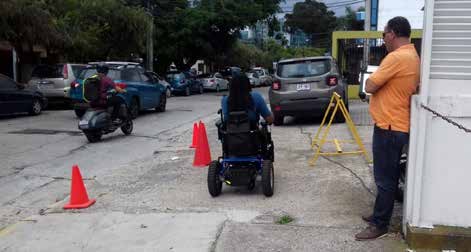¡Y, sin embargo, nos movemos!”. Cuerpos y experiencias de las personas con discapacidad en ciudades capacitistas.
Laura Paniagua Arguedas
This article explores the mobility experiences of people with disabilities in Costa Rica. It presents cases derived from an ethnographic research that used moving interviews and audiovisual media to record information. Cities have been created, designed and managed for bodies considered “able-bodied”, that is, those considered “strong”, “intelligent”, “complete” and “healthy”, which is known as ableist urbanism. In this sense, Crip theory and critical disability studies are used as frameworks. This urbanist approach excludes various body types and does not take into account differences in mobility, pace, speed and use of the city by different populations. The aim is to understand urban mobilities through interdependent systems that are shaped by networks and flows. In cities, there is a dependency between people, infrastructures and social arrangements (with their formal rules and rules of use) that shape mobility support systems. However, by not taking into account people with disabilities and their expanded forms of mobility, multiple disconnections and disarticulations are generated, forcing this population to build their own networks within these systems.

Type of production: Scientific articles and chapters
City: Other
Year of publication: 2023
Publisher: Revista Transporte y territorio, no.28
Language(s) of publication: Español
Keywords:
